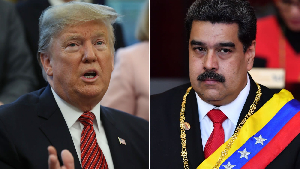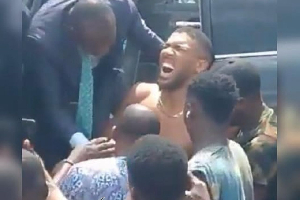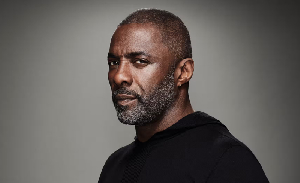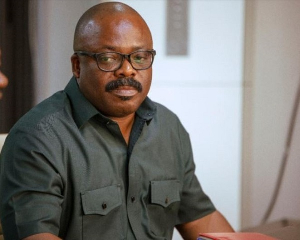What Le Roy Inherited
When Le Roy took over as head coach of the Black Stars, the team had the pedigree of giant killers. Having beaten teams ranked no 2 and 5 in the world (Czech Republic and USA respectively), and only losing to the defending champions and eventual successors at the 2006 World Cup, Ghana had won admirers from all over the globe. This team had a near flawless midfield (even without the suspended Laryea Kingston), as well as a good central defence and a fine goalkeeper. However, the team’s bane was its attack, which consistently drew blanks. After le Roy took over, one would have thought that the priorities for coach le Roy would have been to find strikers, and find replacements for his defenders and midfielders, in case of injuries or suspensions. He had one and a half years to build a team that could win the next African Cup of Nations, and then subsequently at least make it to the semi finals of South Africa 2010. Considering the players he had available, this was not too much to ask. Ghana was named as host of the next African Nations Cup (CAN), so he had to have a lot of friendlies in order to mould a championship winning team. There were also other players who had not made the World Cup squad, but had the ability to better the team.The Start – 1 and a Half Years
Le Roy started well. He introduced striker Junior Agogo and winger Derek Asamoah (both from lower leagues in England) into the team, and took the Stars to Asia to beat both Japan and South Korea. In a subsequent match in London, he had to make do without his first choice defence, and used Francis Dickoh and Eric Addo in central defence, as his side battled to a 1-1 draw with Australia. These experiments were good, since Dickoh and Agogo became part and parcel of the first team. He also announced that he would build a team from the local league, but not too much came from that.In 2007 he finally found a remedy to the problems at left back; the ambidextrous Hans Sarpei was drafted there to replace the unimpressive Habib Mohammed, and John Paintsil made the right back position his own. Substitute midfielders were still not coming in, though, but in Joetex Frimpong, Asamoah Gyan, Junior Agogo, Alex Techie-Menson and Matthew Amoah, he had an above average set of strikers who could convert a fraction of the numerous chances that the midfield generated. Given that our best strikers at this time were a young striker finding his feet in Italy (Asamoah Gyan) and a Division 3 journeyman in England (Agogo), le Roy had his work cut out for him, if he wanted to replicate what he did to Eto’o in Cameroun a decade ago. The messiah came in the person of Mario Barwuah Balotelli, a 17 year old monster of a striker who has broken into the Inter Milan first team. Boasting an astonishing goal-scoring rate at the Inter junior team, he was knocking on the doors of Inter’s first team which has world class strikers like Ibrahimovic, Adriano and Crespo. He was named in Ghana’s squad which faced Senegal in London, but there are reports of the Italians adopting underhand tactics in order to get him to play for them. As a result, the search for a striker to match Eto’o, Drogba or Kanoute continued.
Ghana ended an embarrassing 15 year streak by whipping Nigeria 4-1, in a match where 2 of le Roy’s strikers got on the score sheet. After this game, he decided to change his winning formation and experiment with a 4-5-1 formation, which was supposed to metamorphose into 4-3-3 when his team moved forward. This formation earned him a record of 2 draws versus inferior opposition (Senegal and Austria), a close loss to Brazil, and a disgraceful name spelling at the hands of Saudi Arabia. He also tried it in the first half against Morocco, where Ghana was outplayed, but after changing to 4-4-2, Ghana won by 2-0. In between times, he introduced promising potentials like Andre Dede Ayew, who was rescued from France’s under 21 clutches, Yao Kumordzi and Tony Annan, formerly of Hearts of Oak. The first two players enjoyed cameo appearances, Kumordzi being used more by the Olympic squad, whilst Tony Annan staked his claim at the heart of the midfield.
4 Nations Tournament
The 4 Nations tournament was one of the finest opportunities he had to introduce young and upcoming talents into his squad, and give them the experience of playing at home. However, he still relied on his old squad. Hence, players like Prince Buabeng, Ampimah Barusso, Yao Kumordzi and Chris Dickson were not called up. Stephen Appiah was returning from a long standing knee injury, hence his Turkish team used him sparingly. Nevertheless le Roy saw it fit to start him and play him for over 60 minutes in both games against Togo and Benin. It was not surprising, then, to hear a few weeks later that Appiah had injured himself again. This was a big blow, and le Roy had still not found a replacement for Capito.Provisional Squad Pruned to the Final 23
A couple of months later, le Roy named his provisional 40 man squad for the CAN. Players like Hamza Mohammed, whom I am sure the coach cannot mention the last time he saw him play, let alone tell anyone the position he plays in Romania, got in ahead of other veterans like Mark Edusei, a starter for a Serie A team, and the budding Prince Buabeng, who plays in Scotland. A lot of the players in this provisional squad, though, were injured or half fit. These included Stephen Appiah, Kofi Amponsah, Matthew Amoah, Shilla Illiasu, Laryea Kingston and the Gyan brothers.When he pruned his squad to his final 23, the danger signals started to gain momentum. Le Roy called up only 2 out and out strikers, and 2 natural centre backs. A lot of the half fit players made it as well. Question marks were raised about why a youngster like Kojo Asamoah made it into the team. Asamoah plays as a left winger at Liberty Professionals, yet he was listed among 5 strikers. Looking closely at the list of strikers, it was clear that only 2 or 3 fit the label of centre forward; the rest were wingers. If he was going to pick a young attacker from the local league, then all roads led to Kumasi, where a young man by the name Eric Bekoe had hit 9 goals in 10 games in the One Touch Premier League for Kotoko. Chris Dickson, who played at the same level as Junior Agogo, had also gotten 8 goals in 11 games whilst on loan to Gillingham. One highlight in the team, though, was the inclusion of Quincy Owusu-Abeyie, a highly rated winger who learnt the game at the legendary Ajax Youth Academy in Amsterdam, and had polished his game at Arsenal. He was nearly snatched from Ghana by Holland, but credit to the FA, as the officials did all they could to ensure that after a year of wrangling at FIFA, he was finally available for Ghana. His speed and crosses were going to be a plus for Ghana.
Preparing for CAN
Preparations for the CAN were nothing short of shambolic; whilst others teams like Egypt, Angola, Zambia, Guinea and Tunisia were playing against each other, we played 2 games, one against a local club, and the other versus a makeshift team of immigrants, both in the United Arab Emirates. One wonders if the ‘officials’ in charge of such arrangements are not the same people who had the team fly very late to Saudi Arabia for the debacle in Riyadh.CAN 2008 – Host and Win?
Ghana started the tournament against Guinea, a team that le Roy rated highly. After dominating and hitting the post countless times, it took a moment of magic from Sulley Muntari to grab the first 3 points. Le Roy took the same team into the next match, where we laboured to a 1-0 win over an improved Namibian side. He started both games with the half fit Asamoah Gyan, who was lambasted by fans and the press after below average performances. The loss of Laryea to suspension against Namibia proved a blessing in disguise, because the hugely talented Tony Annan had the chance to enter the team as a defensive midfielder, and allow Michael Essien to bomb forward as Appiah would do. Muntari was also finally given the opportunity to play on his favourite left side, and the right footed Owusu-Abeyie started for the first time on the right side of midfield. Thus Ghana played its best game at the tournament versus Morocco, and qualified for the next stage with maximum points.Then the Nigerian nemesis rolled into Accra. After clawing back to level terms, and then losing team captain John Mensah, le Roy showed mettle by pulling out an injured Gyan for Laryea, and then bringing on Haminu Dramani for the tiring Owusu-Abeyie. With Sulley running the midfield and Essien filling in at the back, Ghana played as if she had numerical advantage, and kicked Nigeria out in a heroic performance.
Things Fall Apart
Going into a tournament where one would play 6 games in 3 weeks in order to be champions, it was always going to be a miracle if the whole team would advance without any injuries or suspensions. As fate would have it, Ghana got struck by both, and now the coach was in a conundrum as to his replacements for (you guessed it) a centre back and a striker.Considering the threat that a world class player like Samuel Eto’o poses, it was right on the money that Michael Essien be made to play at the back, so as to neutralize his threat. However, this created a void in the middle, and one would have thought that the coach would have maintained the same formation, and either introduce Yao Kumordzi or Ampimah Barusso to complement Annan in the middle, so that Sulley and Owusu Abeyie could do their own thing on the wings. However the coach goofed, and started the game with four (4) wingers. This was always going to pose problems for the team, and we handed the game over to the Camerounians. Having only one fit striker in the team meant that Baffour Gyan was the only other option to start alongside Agogo, but le Roy inexplicably decided to start Agogo alone upfront, a move reminiscent of the 4-5-1 and its legacy a year ago. Both sides came close in the first half, but Cameroun’s inability to match us on the day meant that Ghana could only push the self-destruct button to avoid playing in the final. Tragically, we did.
In the relatively unimportant third place match, le Roy decided to field his strongest available squad, bar Owusu-Abeyie, against an Ivorian side that chose to try a new-look central defence and midfield. Even then, Ghana struggled in the first half before controlling the second half, and banged 4 past a hapless third choice Ivorian goalie. By the end of the tournament, le Roy still had not tried out the highly rated Kumordzi, and Kojo Asamoah became the first ever Ghana Number 10 never to play even a single minute in a major competition.
The Way Forward
The GFA looks certain to retain le Roy as coach, and he has limited time, as he works to qualify for both the 2010 African Nations Cup and the World Cup. His priorities remain virtually unchanged from when he took over in 2006. He will have to shore up the defence, better his midfield options and find strikers. During the tournament he was reported to have retorted that he was not ‘God’ when asked about improving on his misfiring strikers. This was, for the avoidance of a stronger word, a very unfortunate statement for him to make, considering the options he had before the tournament started.As Ghana 2008 rolled on, Mario Barwuah Balotelli had scored 4 goals in his 2 starts for Inter Milan; 2 of those goals came against the highly rated Juventus who played with world class players like Nedved, del Piero and Legrottalie. Italy are doing all they can to snatch the young man from Ghana, but it is up to the GFA to do all they can to save him. The Boateng brothers, Kevin and Jerome, of Tottenham and Hamburg respectively, are also in danger of being lost to Germany. Kevin’s central midfield genius and Jerome’s supreme defensive ability would be vital to Ghana as we aim to finally re-annex the CAN and impress at the World Cup. There are many young Ghanaian talents blooming in clubs all over Europe and Africa. Ghana also has a lot of gifted players in the under 23 team, with players like Sadat Bukari, Isaac Vorsah, Nafiu Iddrissu and Jerry Akaminko who can be drafted into the senior team for the required depth. The Starlets class of 2007 included standouts like Daniel Opare, Ransford Osei, Saadick Adams and Francis Boadi, all bound to excel, especially considering the calibre of clubs they are connected to at the moment. Hopefully, the One Touch Premier League will continue after the CAN without any legal wrangling, and with good pitches in Accra, Kumasi, Takoradi, Tamale, Tema and Obuasi, quality of play should be much higher than in 2007. Le Roy can then work on his local Black Stars team, and hopefully, this team will get some playing time against regional teams like Sierra Leone, Benin and the Gambia.
If le Roy is given a free hand, he should be able to beef up this current team and fashion a side that can win Angola 2010 and even win South Africa 2010.
Having said that, it depends on what our objectives in 2010 are.















